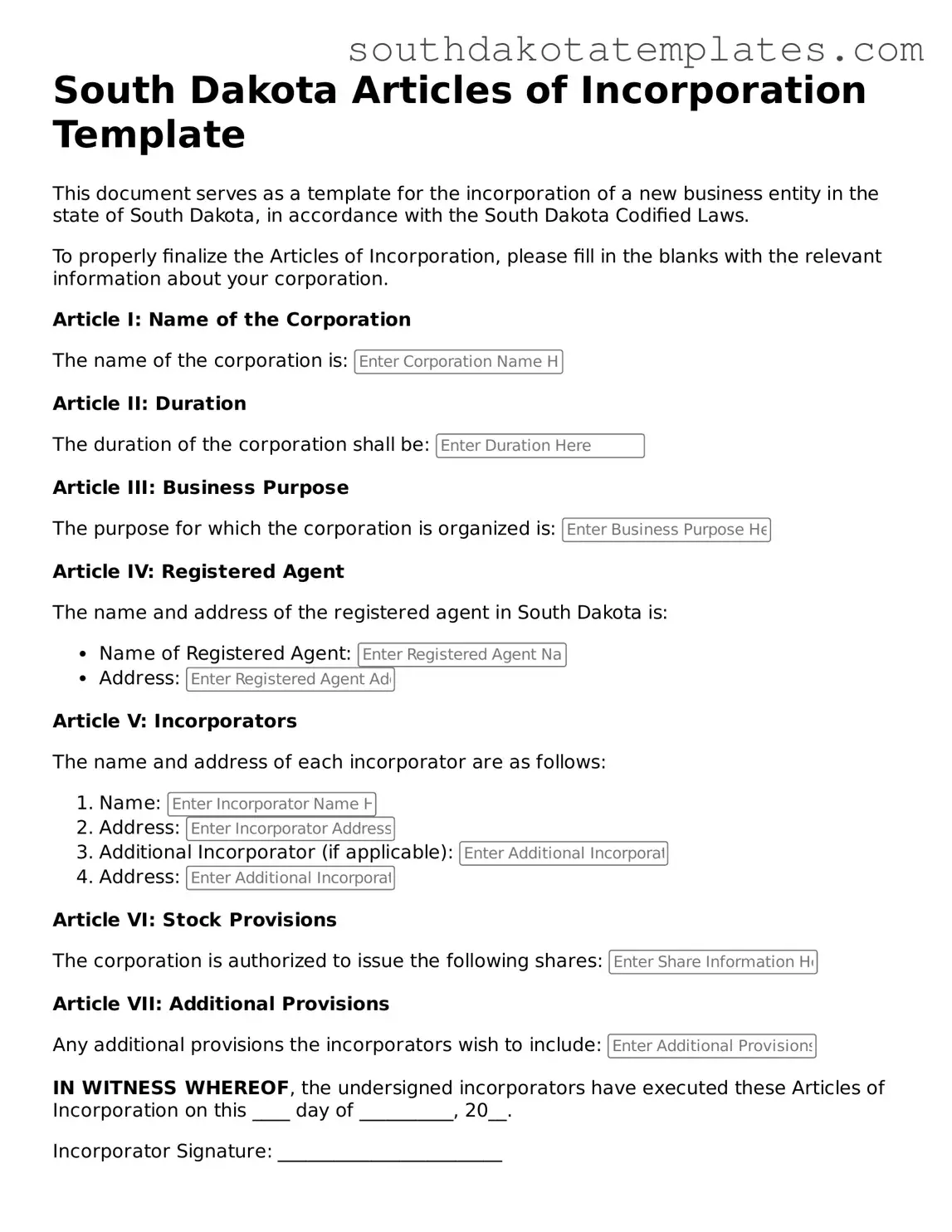When establishing a business in South Dakota, one of the essential steps involves filing the Articles of Incorporation form. This document serves as a foundational legal instrument that outlines the basic structure and purpose of the corporation. Key elements of the form include the corporation's name, which must be unique and compliant with state regulations, as well as the designated registered agent who will receive legal documents on behalf of the corporation. Additionally, the form requires information about the corporation's duration, which can be perpetual or for a specified term, and the purpose of the business, detailing the activities the corporation intends to engage in. The Articles of Incorporation must also include the number of shares the corporation is authorized to issue, which is crucial for determining ownership and investment. Furthermore, the incorporators, who are responsible for filing the document, must provide their names and addresses. Collectively, these components ensure that the corporation is properly registered and recognized under South Dakota law, setting the stage for its legal existence and operational framework.
